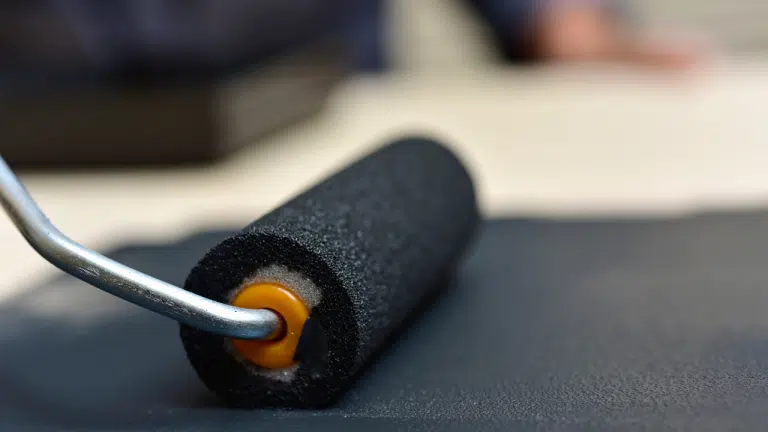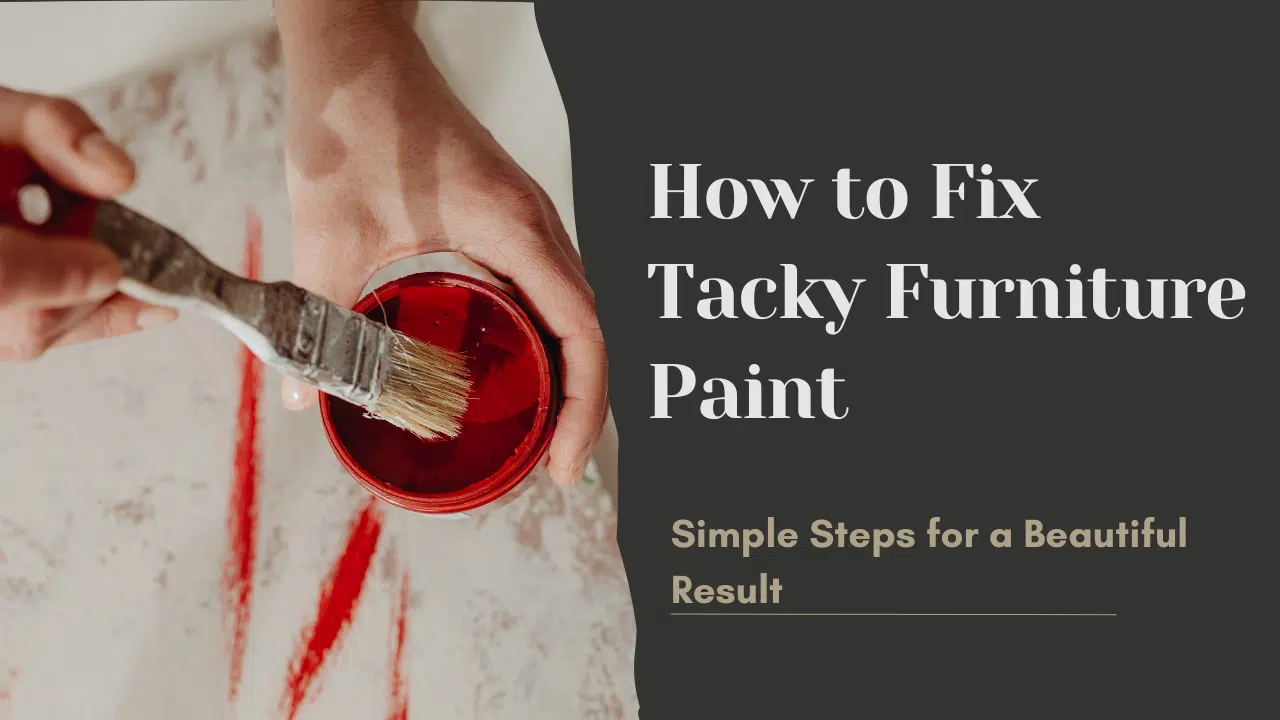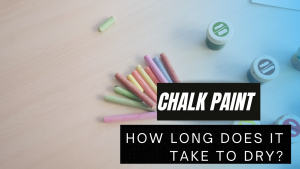Do you have furniture you’ve painted yourself, but it’s not looking as good as you’d like? Maybe the paint is too thick or sticky to the touch. This blog post will show you how to fix tacky furniture paint and make your pieces look beautiful again! We’ll walk you through simple steps that are easy to follow and won’t take up a lot of your time. So don’t worry – even if your furniture painting skills aren’t perfect, you can still get a great result!
What is tacky furniture paint, and how can you identify it
Tacky furniture paint is a type of paint designed to adhere to surfaces without the need for primer or sanding. It is usually made from a blend of acrylic and latex, and you can apply it to various materials, including wood, metal, and plastic. Tacky furniture paint is available in a wide range of colors and can use to create a variety of looks, from distressed finishes to glossy enamel-like surfaces. One way to tell if a paint is tacky is to touch it; it probably is if it feels sticky or tacky to the touch. Another way to know if the paint is tacky is to look at the directions on the can; if it says that the paint needs to be top coated, the paint is likely tacky.
How to fix tacky furniture paint
Applying a fresh coat of paint is a great way to breathe new life into old furniture. However, sometimes the color can become tacky or sticky, making it difficult to apply smoothly. If this happens, there are a few simple fixes that can help. First, make sure that the paint is thoroughly dry. If it is still wet, give it more time to dry before proceeding. If the paint is dry and still tacky, you can try lightly sanding the surface with a fine-grit sandpaper. It will help smooth out the surface and provide a better foundation for the new paint. Another option is to dilute the paint with mineral spirits or water. It will make it easier to apply and will help to prevent further tackiness. Finally, you can use a topcoat of varnish or sealant on the surface. It will provide a protective barrier and help keep the paint from becoming tacky in the future.
You can fix tacky furniture paint and create beautiful, lasting results by following these simple steps! So don’t be discouraged if your furniture doesn’t look perfect at first – with a bit of effort, you can achieve the beautiful finish you’re looking for.

Tips for preventing tacky furniture paint in the future
Have you ever painted a piece of furniture, only to have the paint start to chip and peel a few months later? If so, you’re not alone. Many people have problems with tacky furniture paint, but there are a few things you can do to prevent it from happening in the future. First, make sure you sand the furniture’s surface before you begin painting. It will help create a smooth surface that the paint can adhere to more easily. Second, use a primer before applying the paint. It will help create an additional layer of protection against chipping and peeling. Finally, make sure you select high-quality colors designed for use on furniture. By following these simple tips, you can avoid tacky furniture paint and create beautiful, long-lasting results!
FAQs on How to Fix tacky furniture
You’ve just finished painting your furniture, and it looks gorgeous, but now it’s tacky to the touch. Or maybe you’ve owned a piece of painted furniture for a while, and it’s started to feel sticky. Regardless of how it happened, here are answers to some frequently asked questions about how to fix tacky furniture.
What causes tacky paint?
When the paint dries, it goes through a curing process where the solvents evaporate, and the paint hardens. If there isn’t enough airflow or the humidity is too high, the color may not cure correctly and remain tacky.
Can tacky paint be saved?
In most cases, yes! You can fix tacky furniture paint and create beautiful, lasting results with a bit of effort. However, if the paint is excessively tacky or left for an extended period without being selected, it may not be possible to salvage it.

Can you clear coat over tacky paint?
When you’re painting a room in your house, the last thing you want is for the paint to be tacky. But sometimes, no matter how careful you are, that’s exactly what happens. You might be wondering if you can just clear coat over the tacky paint to fix the problem. Unfortunately, it’s not that simple. Clearcoat is meant to protect the underlying paint job, not fix it. So if the paint is already tacky, a clear coating over it will make things worse. The best way to fix sticky paint is to remove it and start over. That might sound like a pain, but it’s the only way to ensure a smooth, professional finish.
Does talcum powder fix tacky paint?
You just put the finishing touches on your latest work of art, step back to admire your handiwork, and realize that the paint is still tacky. You can’t very well put your masterpiece on display like this, so what can you do? If you’re out of options, you might be surprised to learn that talcum powder can help to fix tacky paint. Lightly dust the affected area with talcum powder, and the color should dry more quickly. In addition, one can also use talcum powder to prevent paint from becoming tacky in the first place. If you’re concerned about color sticking to your brush, dip the brush in talcum powder before you start painting. With a little bit of creativity, you.
How long does it take for tacky paint to dry?
Most people have probably experienced the frustration of painting a room only to find that the paint is still tacky hours later. So, how long does it take for tacky paint to dry? The answer may surprise you. The time it takes for paint to dry can vary depending on several factors, including the type of paint, the temperature and humidity levels, and even the thickness of the paint. However, most colors will take at least two hours to dry completely. So, if you’re painting a room and find that the paint is still tacky after an hour or two, don’t panic – it’s probably just taking longer to dry due to one of these factors. Just be patient and wait a little longer before you start using the room.
Conclusion
Thank you for following along on this furniture painting journey. I hope that you feel inspired to take on a project of your own and that you will be more confident in your ability to fix tacky furniture paint. Please don’t hesitate to reach out if you have any questions or comments. Happy painting!




